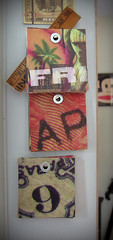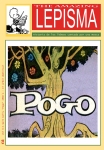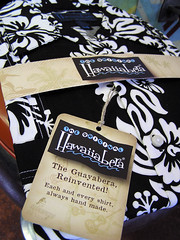Thanks to Nobuyuki Hayashia
In the back streets of Tokyo's upscale Aoyama district, there's a little antique store quite unlike all the others in the neighborhood. Located on the second floor of an old apartment building, And Up specializes in selling antique radios and, of all things, iPods.
The store's owner, 50-year-old Takeyuki Ishii, recommends plugging an iPod into an FM transmitter, such as Griffin Technology's iTrip, and listening to music through the speaker of an antique radio.
Ishii believes there is aural magic in the combination of the very old with the very new. Playing an iPod through an old radio or tube-driven amplifier gives it a special warmth and atmosphere, he says.
"What we are suggesting here is an old-and-new way to listen to music," Ishii said. "In electronics stores, you find the latest speakers with crisp, clear and accurate sounds. By contrast, most of the radios we have are not even stereo. The sounds are hardly clear. You might even hear some noises, and radios with tubes change their sounds as the tube warms up."
Ishii insists the antique equipment creates an atmosphere that has been forgotten. The softer tones ease listeners and make them feel warm and relaxed.
"Listening to their sounds, I can recall scenes from my childhood," he said.
Ishii also argues that the quality of CDs and today's speakers are so good, they simply reveal the limitations of poor recordings, especially older music.
By contrast, antique radios hide defects nicely with their vague but warm sounds.
Ishii, a former sculptor, wasn't always a fan of antique radios. He discovered their appeal when researching a way to listen to CDs in his classic Mercedes Benz.
Ishii didn't want to replace the original, aging audio system. A friend suggested he use an iPod with the iTrip transmitter. He loved how they worked, as well as the sound they produced.
He then tried the iPod/iTrip combination with his old stereo system and that was when he had the revelation. He loved it so much that he felt obliged to share the experience with more people.
In March, he opened And Up in Aoyama, a Tokyo neighborhood known for its many antiques stores. Ishii owns another Tokyo antiques shop selling Arita-yaki, a type of Japanese porcelain.
However, business at And Up has hardly been booming. Plenty of customers drop by the store, and despite loving the sound, few seem willing to buy the pricey antiques.
"It is hardly successful as a business," Ishii shrugged.
One customer listened intently to several antique radios but instead of buying one, asked Ishii where he could get his old stereo system repaired. Ishii promised to arrange it.
"That is only natural," said Ishii.
Ishii said instead of buying from him, some potential customers pick up bargain equipment on Internet auctions. Many of the shop's visitors are middlemen who prefer talking to buying, and will stay many hours telling stories of their favorite old radios. Ishii seems content with the arrangement.
"I am happy that they like the idea," he said.
Nonetheless, Ishii is hoping to attract a younger audience unfamiliar with the joys of his aural artifacts. He has a new tactic: pairing modern monitor speakers (the kind often used in recording studios) with antique amplifiers and iPods.
Younger customers, Ishii said, are greatly excited by the soft sounds and the glow of the tubes. It's all new to them, Ishii said.
"I want these kids to know the great culture we had as well as some of the great engineering and design work of the mid-20th century," he said. "The industrial goods of today become obsolete too fast. We aren't given enough time to digest them. I think now is a good time to stop, look back and learn from some of the great work we have begun to forget."
It may be working. Hiroaki Imai, a 30-something customer, said, "I like antique electronic stuff.... I think these radios have better aesthetics than today's gizmos."
That's Right,
HMK
Subscribe to:
Post Comments (Atom)






























































No comments:
Post a Comment